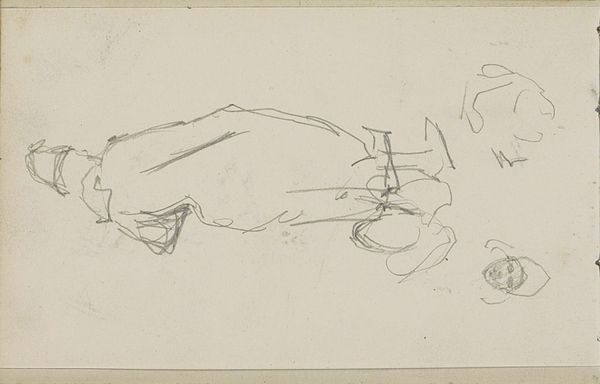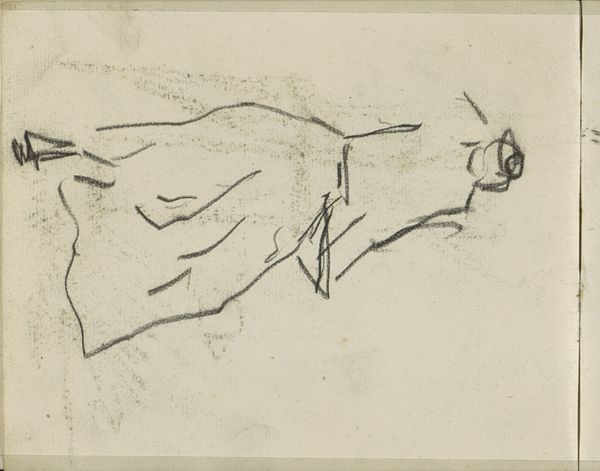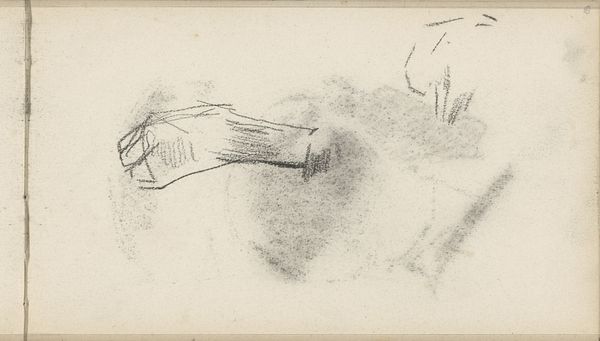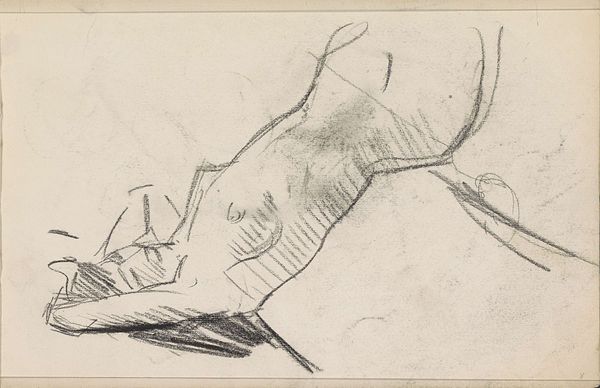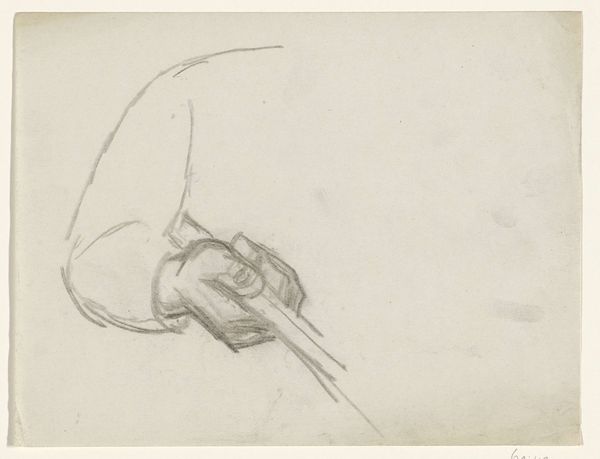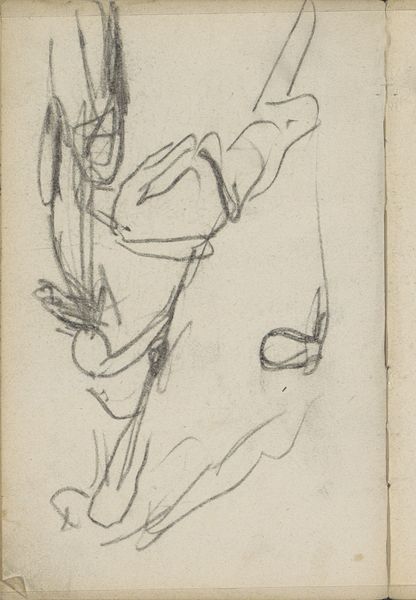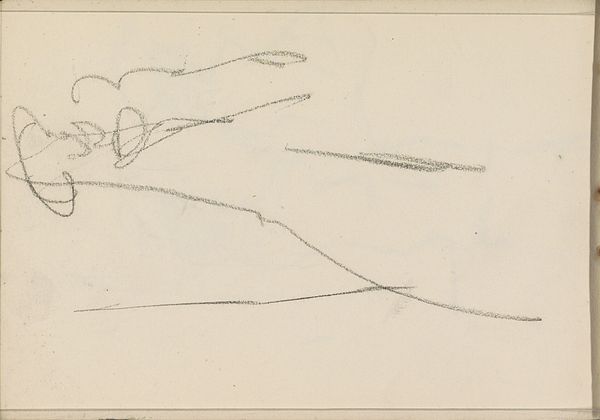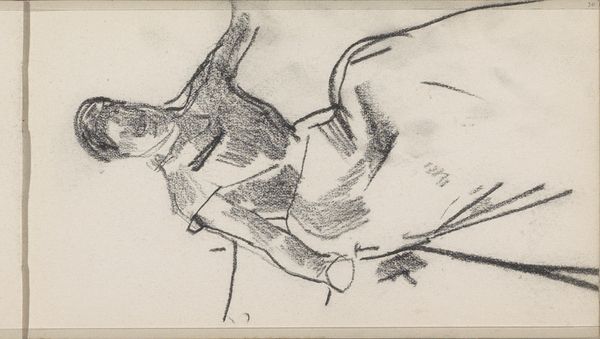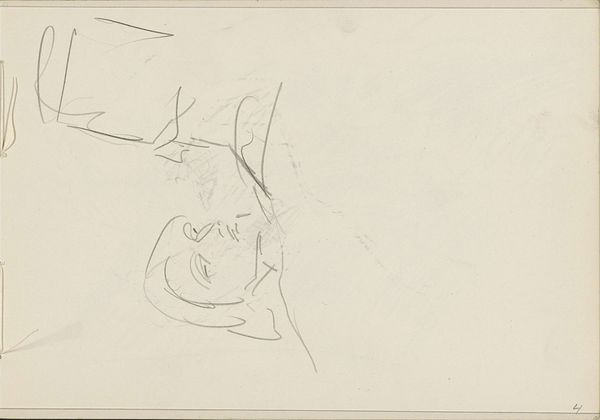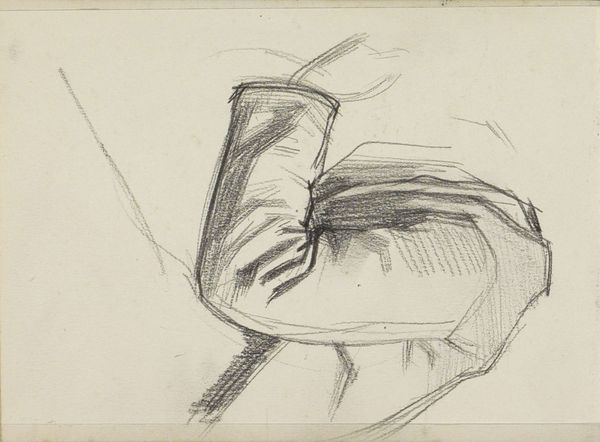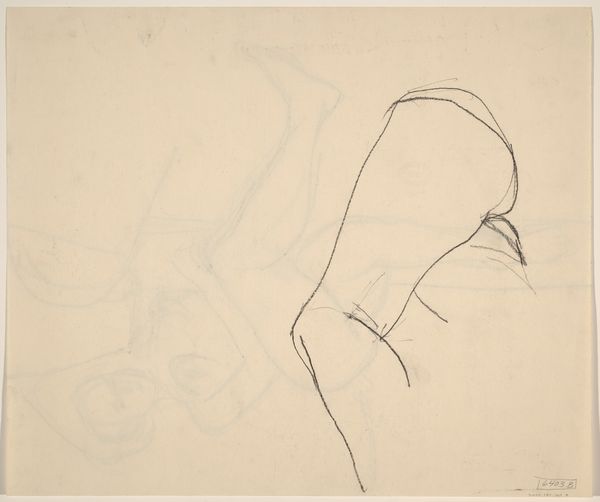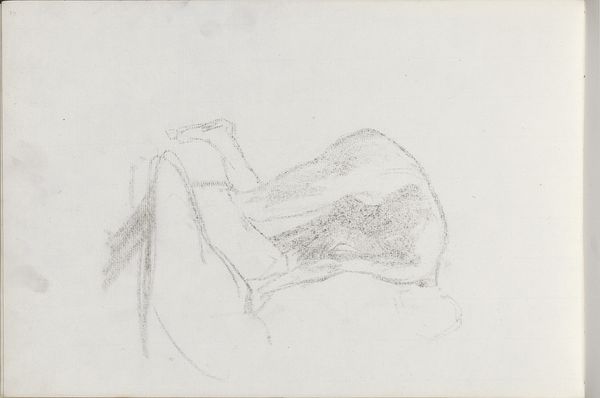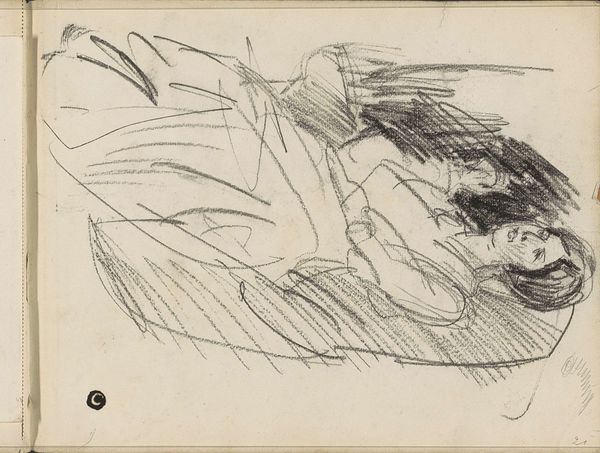
Copyright: Rijks Museum: Open Domain
Curator: This drawing, "Figuur met een arm omhoog," by George Hendrik Breitner, sketched sometime between 1893 and 1903, gives the impression of being very spontaneous. I find it intriguing how little it took to convey an expression or gesture. What grabs you when you first look at it? Editor: I find it simple, almost childlike. The strokes are rough, like a preliminary study. I’m interested in this rawness, like witnessing the artist’s initial idea on paper. I wonder how it connects with the world beyond the paper; what can we make of its style? Curator: The pencil lines expose a clear depiction of labor here. It invites consideration of what art materials were available to Breitner. A materialist approach might examine the supply chains of graphite and paper—from the mines where graphite was extracted to the mills where paper was manufactured, reflecting class dimensions and their consumption by artists in that time. Do you think the accessibility of the medium influences its expressive qualities here? Editor: Absolutely! Perhaps the disposability of pencil and paper, compared to, say, oils and canvas, enabled such a loose, exploratory approach. Breitner might feel free to make "mistakes." Could the impressionistic sketch also be about class? Curator: Certainly. Impressionism's focus on everyday life, rendered rapidly, challenged the academic art establishment's preference for grand historical and mythological subjects, carefully constructed. This is a swift material reality; consider the working classes' realities against this backdrop. How does the 'quickness' you mentioned earlier relate to that? Editor: I hadn't thought about the connection with societal production as much as the artist’s process itself, but viewing this in that wider context adds a completely new meaning to the art object. I wonder if this approach would change how I perceive art now. Curator: It might, by helping to contextualize its creation and the socio-economic environment from which it comes. Approaching art this way gives an extra value to this particular drawing.
Comments
No comments
Be the first to comment and join the conversation on the ultimate creative platform.
